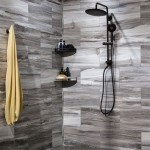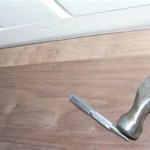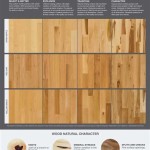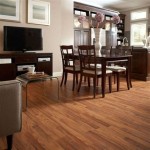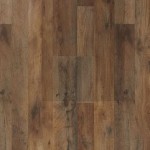```html
Understanding 3/8 Inch Engineered Hardwood Flooring
Engineered hardwood flooring has become a popular choice for both residential and commercial spaces, offering a balance of aesthetics, durability, and affordability. Among the various thicknesses available, 3/8 inch engineered hardwood is a common option. This article will delve into the specifics of 3/8 inch engineered hardwood flooring, exploring its construction, benefits, applications, and considerations for installation and maintenance.
Engineered hardwood distinguishes itself from solid hardwood by its multi-layered construction. Unlike solid hardwood, which consists of a single piece of wood, engineered hardwood is composed of several layers bonded together. The top layer, known as the veneer, is made from a thin slice of real hardwood, providing the authentic look and feel of solid wood. Beneath the veneer lies a core, typically constructed from multiple layers of plywood, high-density fiberboard (HDF), or a similar engineered wood composite. These layers are cross-laminated, meaning they are glued together with the wood grain running in different directions. This cross-laminated construction provides enhanced stability and resistance to warping, buckling, and expansion/contraction due to changes in humidity and temperature.
Key Point 1: Construction and Composition of 3/8 Inch Engineered Hardwood
The 3/8 inch designation refers to the overall thickness of the engineered hardwood plank. This thickness includes both the hardwood veneer layer and the core layers combined. The thickness of the veneer itself can vary, typically ranging from 1mm to 3mm. A thicker veneer generally allows for more refinishing opportunities over the lifespan of the floor, but it also contributes to a higher cost. The core material plays a crucial role in the floor's stability and resistance to moisture. Higher quality cores made from denser materials like HDF offer better performance in environments with fluctuating humidity levels.
The specific layers that make up the core of 3/8 inch engineered hardwood can vary depending on the manufacturer and product line. Some manufacturers utilize multiple thin layers of plywood, creating a strong and stable core. Others may use a single, thicker layer of HDF, which provides excellent dimensional stability. The choice of core material often influences the overall cost and performance characteristics of the flooring.
The manufacturing process of engineered hardwood involves carefully bonding these layers together under high pressure and heat. This process ensures a strong and durable connection between the layers, preventing delamination and ensuring the floor's longevity. The use of adhesives during manufacturing is also a critical factor, as high-quality, low-VOC (volatile organic compound) adhesives contribute to a healthier indoor environment.
The surface finish applied to the hardwood veneer is another important aspect of the flooring's construction. This finish protects the wood from wear and tear, scratches, and stains. Common types of finishes include polyurethane, acrylic urethane, and oil-based finishes. The type of finish affects the floor's durability, appearance, and maintenance requirements. For example, polyurethane finishes are known for their durability and resistance to scratches, while oil-based finishes offer a more natural look and feel but may require more frequent maintenance.
Key Point 2: Advantages and Disadvantages of 3/8 Inch Engineered Hardwood
One of the primary advantages of 3/8 inch engineered hardwood is its cost-effectiveness compared to solid hardwood flooring. The multi-layered construction allows for a more efficient use of hardwood, making it a more affordable option for covering large areas. Additionally, the engineered construction offers superior stability, making it suitable for installation in a wider range of environments, including basements and over concrete subfloors, where solid hardwood may not be recommended due to moisture concerns.
Another key advantage is the ease of installation. Many 3/8 inch engineered hardwood products feature click-lock systems, which allow for a floating installation. This means that the planks are connected to each other but not directly glued or nailed to the subfloor. Floating installations are typically faster and easier than traditional glue-down or nail-down methods, making them a popular choice for DIY projects. However, it is important to note that proper subfloor preparation is still crucial for a successful installation, regardless of the installation method.
The relatively thin profile of 3/8 inch engineered hardwood can also be an advantage in certain situations. For example, it can be a good option when replacing existing flooring, as it may not significantly raise the floor height, thus avoiding the need to modify doorframes or transitions. This can save time and money during the renovation process.
However, 3/8 inch engineered hardwood also has some potential drawbacks. Due to the thinner veneer layer, it typically has fewer refinishing opportunities compared to thicker engineered hardwood or solid hardwood. While some 3/8 inch engineered hardwood floors with thicker veneers can be refinished once or twice, others with thinner veneers may not be suitable for refinishing at all. This is an important consideration for homeowners who value the ability to restore their floors to their original condition after years of wear and tear.
Another potential disadvantage is the sound absorption properties. Thinner floors tend to transmit sound more readily than thicker floors. This can be a concern in multi-story homes or apartments where noise transmission is a factor. To mitigate this, an underlayment can be installed beneath the flooring to improve sound absorption and provide additional cushioning. The selection of an appropriate underlayment is critical to realizing the full benefits of the flooring. Some underlayments are specifically designed for use with engineered hardwood and offer enhanced sound insulation properties.
Key Point 3: Applications, Installation, and Maintenance Considerations
3/8 inch engineered hardwood flooring is suitable for a wide range of applications, including living rooms, bedrooms, dining rooms, and hallways. Its stability makes it a viable option for basements and over concrete subfloors, although it is crucial to ensure proper moisture control measures are in place. It is generally not recommended for bathrooms or kitchens due to the potential for water damage, unless specifically designed and treated for such environments.
The installation process for 3/8 inch engineered hardwood typically involves preparing the subfloor, laying an underlayment (if desired), and then installing the planks using either a floating, glue-down, or nail-down method. The specific method will depend on the type of product, the subfloor condition, and the manufacturer's recommendations. It is essential to follow the manufacturer's instructions carefully to ensure a proper and long-lasting installation. Improper installation can lead to issues such as gapping, buckling, and squeaking.
Subfloor preparation is a critical step in the installation process. The subfloor must be clean, level, and dry. Any imperfections or unevenness in the subfloor can affect the performance and appearance of the finished floor. If the subfloor is uneven, it may need to be leveled using self-leveling compound or plywood shims. It is also important to test the moisture content of the subfloor to ensure it is within acceptable limits before installing the flooring. Excessive moisture can lead to warping and other problems.
Maintenance of 3/8 inch engineered hardwood flooring is relatively straightforward. Regular sweeping or vacuuming is recommended to remove dirt and debris that can scratch the surface. Damp mopping with a wood floor cleaner is also necessary to keep the floor clean and free of stains. It is important to avoid using excessive amounts of water, as this can damage the wood. Spills should be cleaned up immediately to prevent staining.
Protecting the floor from scratches and dents is also important. Using rugs or mats in high-traffic areas and under furniture can help to minimize wear and tear. Felt pads should be placed under the legs of furniture to prevent scratching. Avoid wearing shoes with high heels on the floor, as they can cause dents. While engineered hardwood is more durable than solid hardwood, it is still susceptible to damage from sharp objects and heavy impacts.
In conclusion, 3/8 inch engineered hardwood flooring offers a combination of affordability, stability, and ease of installation, making it a popular choice for many homeowners. Understanding its construction, advantages, disadvantages, and maintenance requirements is crucial for making an informed decision and ensuring the long-term performance of the floor.
```
Builder S Pride 3 8 In Gunstock Oak Engineered Hardwood Flooring Wide Ll

Builder S Pride 3 8 In Red Oak Engineered Hardwood Flooring Wide Ll

Mayflower 3 8 In Natural Acacia Distressed Engineered Hardwood Flooring 5 Wide Ll

Builder S Pride 3 8 In Red Oak Natural Engineered Hardwood Flooring 5 Wide Ll

Steward 3 8 Variable Width Engineered Hardwood Flooring By Urban Fl United Whole

Builder S Pride 3 8 In Erscotch Oak Engineered Hardwood Flooring Wide Ll

Jasper Rustic 3 8 White Oak Engineered Hardwood Flooring Builddirect

Unfinished Enginereed Wood Flooring 3 X 8 Red Oak Mill Crafted Beveled Hurst Hardwoods

Homelegend Dark Brown Birch 3 8 In T X 5 W Engineered Hardwood Flooring 19 7 Sqft Case Hl189h The Home Depot

Bruce Colony Collection Cherry Oak 3 8 In T X W Engineered Hardwood Flooring 31 5 Sqft Case Evs3238ee The Home Depot


